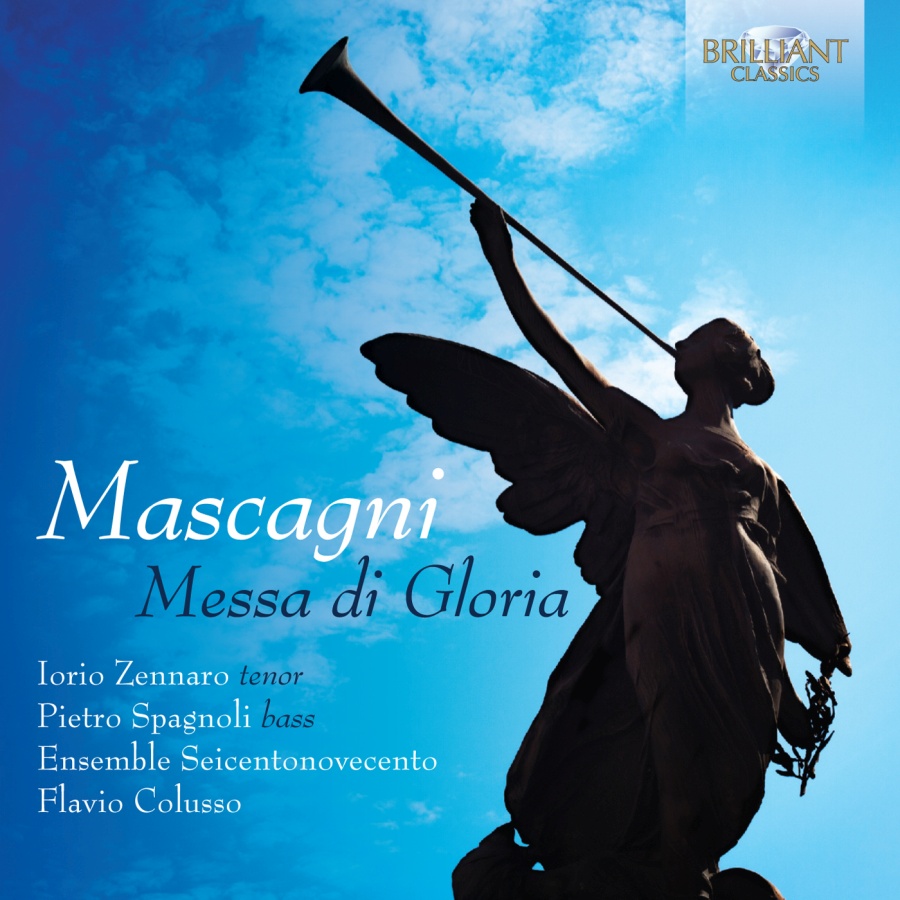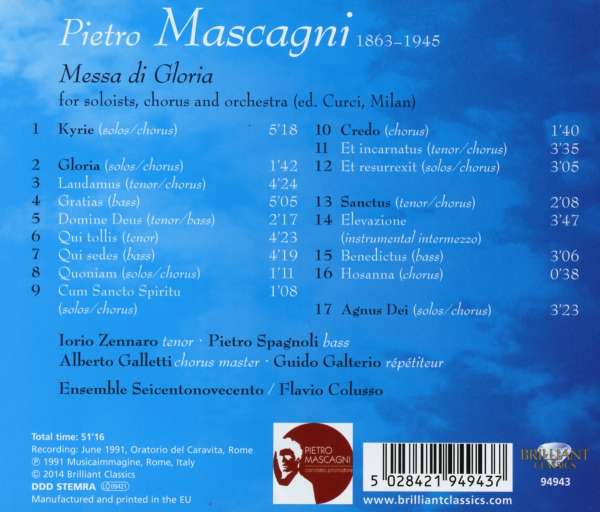
kompozytor
Mascagni, Pietro
tytuł
Mascagni: Messa di Gloria
wykonawcy
Ensemble Seicentonovecento;
Colusso, Flavio
Colusso, Flavio
nr katalogowy
94943
opis
Today Mascagni is best remembered for his verismo opera Cavalleria rusticana, a work which firmly belongs in many of the greatest opera houses’ core repertory, but his Messa di Gloria – which predates this composition by a matter of months and from which many of Cavalleria’s themes in fact derive – was also greatly lauded in its day. Mascagni’s interest in church music can be traced back to the days of his gifted adolescence: by the age of 13 he has written a Kyrie; at the age of 16 he refers in a letter to his involvement in composing a Mass (together with his friend Barbini); and during his student days in Milan he composed a motet as well as a great deal of music for the Messa per la festa di Maria SS. del Rosario. First performed in the Apulian town of Cerginola and conducted by the composer himself, a contemporary account of the Messa di Gloria described it as ‘a very powerful and original work, full of beauty, inspired by the requirements of modern taste’. In 1891 Mascagni repeated the peformance to an audience of 6000, as part of the celebrations marking the sixth centenary of Orvieto’s famous cathedral; such was the reception that the magazine Teatro illustrato declared the occasion ‘an event for the art of music in Italy’. Anyone expecting to hear a chorale, a fugue or even a simple fugato anywhere in the piece would have been disappointed, however, and doubts were raised regarding the religious nature of the work.
nośnik
CD
gatunek
Muzyka klasyczna
producent
Brilliant Classics
data wydania
13-11-2019
EAN / kod kreskowy
5028421949437

(Produkt nie został jeszcze oceniony)
cena 55,00 zł
lubProdukt na zamówienie
Wysyłka ustalana indywidualnie.
Darmowa wysyłka dla zamówień powyżej 300 zł!
Darmowy kurier dla zamówień powyżej 500 zł!
sprawdź koszty wysyłki































